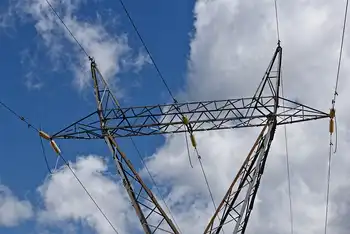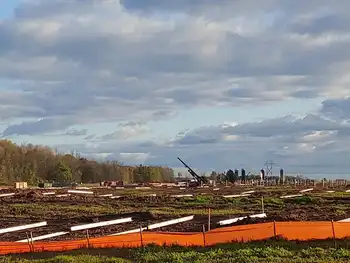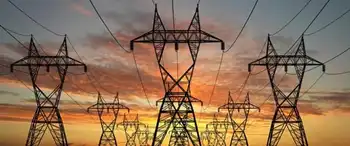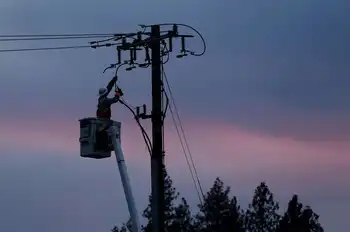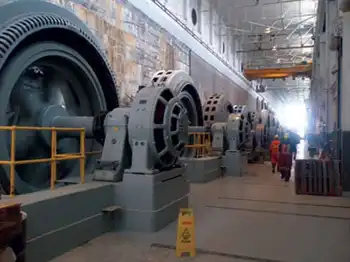Fate of old coal plants hinge on clean tech
By New York Times
CSA Z463 Electrical Maintenance -
Our customized live online or in‑person group training can be delivered to your staff at your location.

- Live Online
- 6 hours Instructor-led
- Group Training Available
It is a given that the new regulations will seal the fate of older and less efficient coal-fired power plants that are not worth enough to justify the expense of new pollution controls. But as U.S. EPA prepares to go final with its emissions rules later this year, the agency is taking flak from industry lobbyists who say the rules would be expensive enough to kill coal plants that would otherwise keep producing electricity at competitive prices.
People disagree on the number of coal-plant casualties to expect. EPA is predicting that coal plants with 10 gigawatts of capacity would be shuttered because of the new limits on mercury, heavy metals and acid gases that were proposed last month. Add in the upcoming Clean Air Transport Rule, which will limit soot- and smog-forming emissions that cross state lines, and the agency is expecting 25 gigawatts of retirements — 8 percent of the U.S. coal fleet.
But according to a report last fall by the North American Electric Reliability Corp., a quasi-public commission that makes sure there is enough power on the electric grid, those rules and two others could lead to as much as 78 gigawatts of coal-plant retirements. Analysts at Credit Suisse predicted that EPA regulations will lead to shut downs of 60 of the nation's 340 gigawatts — about 37 percent of the coal-fired capacity that lacks advanced pollution controls.
Supporters of the new rules say existing power capacity and new plants will make up for the retirements, but some analysts are predicting that the transition won't be so easy. They say the number of retirements will hinge on whether an emerging technology called dry sorbent injection DSI can be put to wide use by the power sector as a cheaper substitute for scrubbers.
EPA estimated that the new technology would achieve "full penetration of the addressable market," but if sorbent injection does not pan out, the power sector could lose more than 50 gigawatts of coal-fired capacity, according to a new report by FBR Capital Markets Corp.
The agency made "bullish assumptions" about dry sorbent injection, said Marc De Croisset, an energy analyst at the investment bank. The technology seems to be working for some power plants, but limited data make it hard to tell whether most plants that burn low-sulfur coal could use it and comply with proposed EPA rules, he said in an interview.
"I think the EPA's job here will be to find that happy medium, where the industry avoids a major upheaval and there is a gradual and realistic path to compliance," De Croisset said.
EPA's analysis says utilities would flock to sorbent injection systems, in which sodium- or calcium-rich minerals are ground into a chalky powder and mixed with the hot flue gas that is produced when coal is burned. The powder, also called a reagent, binds with acid gases such as hydrogen chloride and sulfur dioxide through a chemical reaction, allowing them to be filtered out before the flue gas is released from the smokestack.
In general, sorbent injection is mainly used to meet limits on sulfur dioxide, or SO2, which can cause breathing problems and make rain more acidic. If a power plant cannot meet the new standards with DSI alone, it would likely need a scrubber — and in many cases, that cost would make the plant unprofitable.
These systems are often used to control emissions from coal-fired industrial boilers, and EPA is predicting that the technology will translate well to the larger boilers used at power plants. The agency estimated that utilities would meet the toxic pollution standards by installing DSI systems on coal plants with 56 gigawatts of electric generating capacity, which is enough to power about 28 million homes.
To analysts, that was a leap of faith. The analysis by NERC, for instance, did not consider the likelihood that DSI could save plants from shutting down. And while the Credit Suisse analysts heard optimism about sorbent injection from some companies, there are lingering doubts about whether the technology can cut enough emissions all the time.
"The practical applicability of DSI remains a debatable point due to the disposal of additional ash produced, reliability of the reagent supply chain, the lack of utility sector experience with this technology, and the potential impact on dispatch," the FBR report says.
Will it work?
For some plants, DSI systems could be more attractive than scrubbers, which are better at capturing acid gases but are prohibitively expensive for all but the largest boilers, experts say. Installing a new scrubber can cost $400 per kilowatt — for a 500-megawatt plant, that comes to $200 million — but EPA estimates that the upfront cost of a DSI system will range from about $30 to $150 per kilowatt.
Dry sorbent injection has several advantages, engineers from Solvay Chemicals Inc. said during a conference call. Solvay is a major supplier of trona, a mineral used as a sorbent for DSI systems.
The systems can be installed fairly quickly and pose little risk for power companies because the capital costs are low, said Mike Wood, a business manager at Solvay. The main reason the utility sector is not already using the technology is that power plants have not been ordered to install it yet, he said.
"It's not new," he said. "It just hasn't been used."
Compared to a scrubber, however, the technology could be more expensive for certain plants because companies need a constant stock of the reagents that are used to absorb the harmful gases.
Some power companies are already using DSI, though. Among them is NRG Energy Inc., which wrapped up a project last year that added sorbent injection systems at its 530-megawatt power plant in Dunkirk, New York, and the 380-megawatt Huntley plant in Tonawanda, New York.
Reducing emissions of acid gases by about 87 percent, the "systems performed better than guaranteed on a range of fuels, as confirmed by testing," NRG spokesman David Gaier said. The company says the plants would already comply with EPA's proposed toxics rules.
But the argument that DSI technology is unproven is being put forth by power companies that are vigorously lobbying against the new rules. That was the point made on Capitol Hill last week by the head of the Electric Reliability Coordinating Council, a coalition that was formed by coal-heavy utilities such as Duke Energy Corp. and Southern Co.
Scott Segal, the group's director and an industry lobbyist at Bracewell & Giuliani LLP, said EPA was fudging the numbers when it cited a slideshow by a supplier of pollution controls that said DSI would allow power plants to meet the new standards. If a business did that in a statement to investors, it would "be in a world of trouble," Segal told a House Energy and Commerce subcommittee.
Faced with such claims, EPA and its supporters have argued the emerging technologies have usually ended up being cheaper than expected as companies have gotten experience working with them.
Power companies made similar claims when EPA started pushing them to add scrubbers and switch to low-sulfur coal. While EPA predicted that the 1990 amendments to the Clean Air Act would cost $6 billion per year, and industry groups said the cost would be much higher, the White House Office of Management and Budget found in 2007 that the actual costs were between $1.1 billion to $1.8 billion annually.
The mercury controls that would be ordered by the toxics rules have also proven cheaper than expected as states have moved forward with their own regulations, said Susan Tierney, a Clinton-era Department of Energy official who now tracks reliability as a consultant at the Analysis Group in Boston.
"The thing that these studies always underestimate is ingenuity," Tierney said. "Once people have to commit to doing something because the rules are coming down, people start being much more aggressive to figure out how they can do it as cost-effectively as possible."
In the Capitol Hill debate, the retirement figures are a point of contention between proponents of clean energy and cheap energy.
Many public health and environmental groups want the rules to be as strict as possible, knowing that every coal plant that closes would mean less toxic pollution and less of the greenhouse gases that most scientists agree are warming the planet.
But many industry groups worry that energy costs would rise if the rules shut down coal plants, which have historically sold electricity at the lowest prices.
EPA estimates the toxics rules will raise electricity prices by 7 percent in some parts of the country.
Though supporters say that increase is justified because the pollution reductions would stop 6,800 to 17,000 premature deaths per year and prevent a variety of health problems, the rising prices worry critics such as Rep. Ed Whitfield R-Kentucky, the chairman of the House subcommittee that oversees the Clean Air Act.
"I think this administration is overselling green energy," Whitfield said at a hearing on the cost of new EPA rules.
"Green energy may be available in the long-out future," he added, but with U.S. energy demand expected to increase by 40 percent and many coal-fired plants expected to be taken off the grid, "how in the world can we meet our electricity demands? Wind turbines, solar panels, hydropower are simply not going to be able to do it."
If fewer coal plants must shut down, less new capacity would be needed to replace them. That is where DSI could help.
James Staudt, a consultant on air pollution controls at Massachusetts-based Andover Technology Partners, said the technology has not caught on widely because EPA has mainly limited acid gases through trading programs, which encourage companies to get big pollution reductions from their largest plants. If every boiler must meet an emissions standard, DSI will make more sense.
According to the FBR report, there are currently at least nine coal-fired boilers in the United States that use DSI without a scrubber and would meet EPA's proposed limit on acid gases. Many other utilities have already tested it, Staudt said.
"Until they're required to run it continuously, they're not going to do it," Staudt said. "But in anticipation of that day coming, they've been running test programs.





